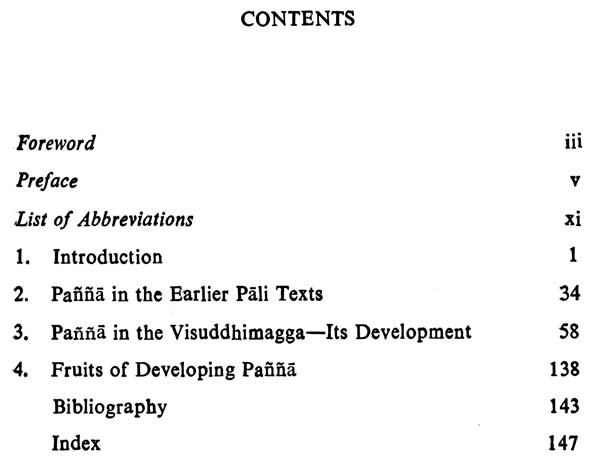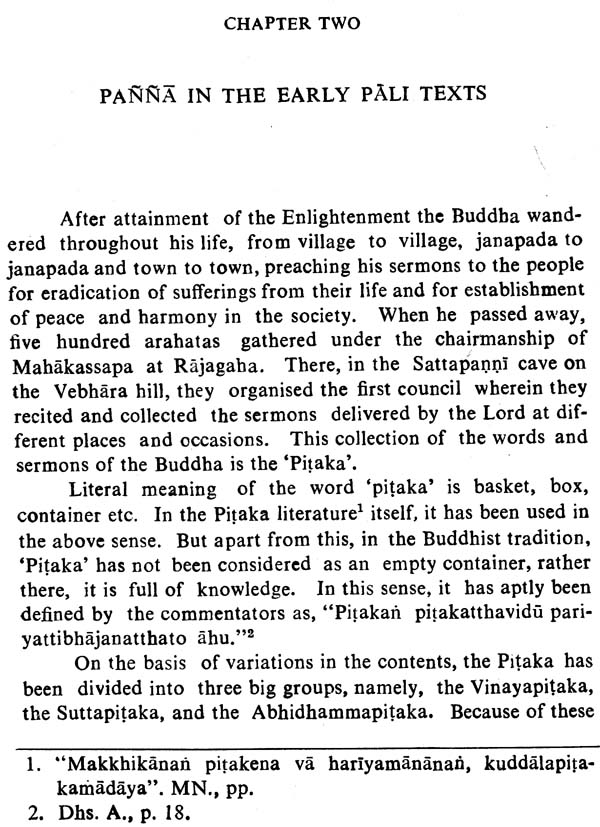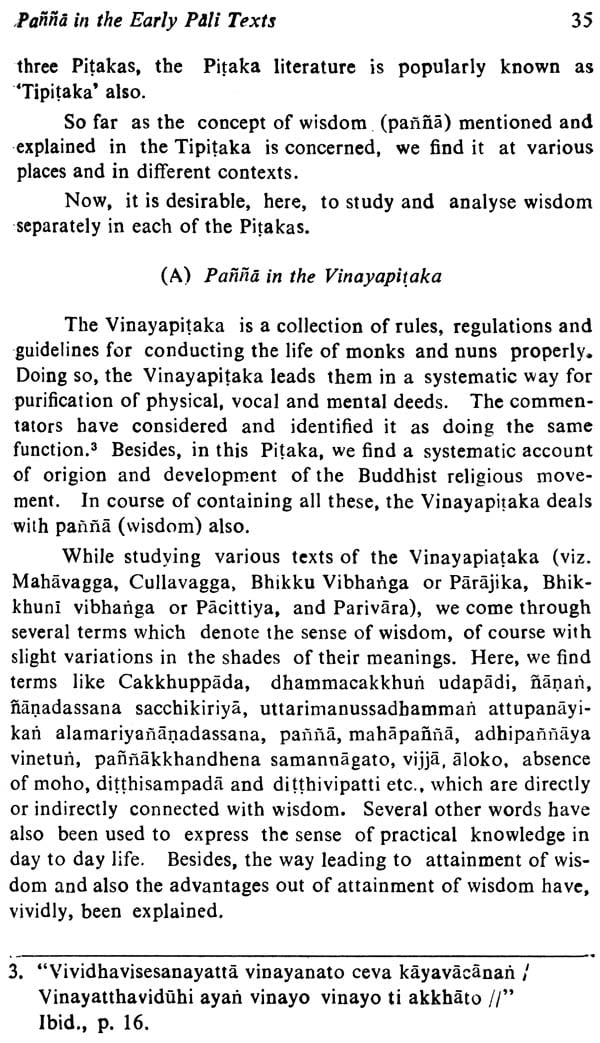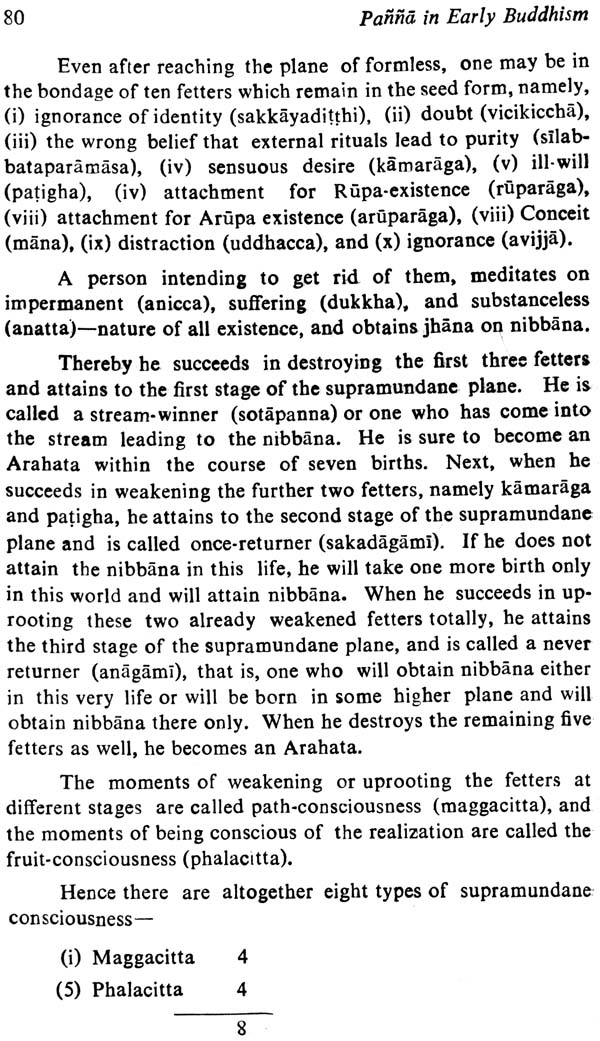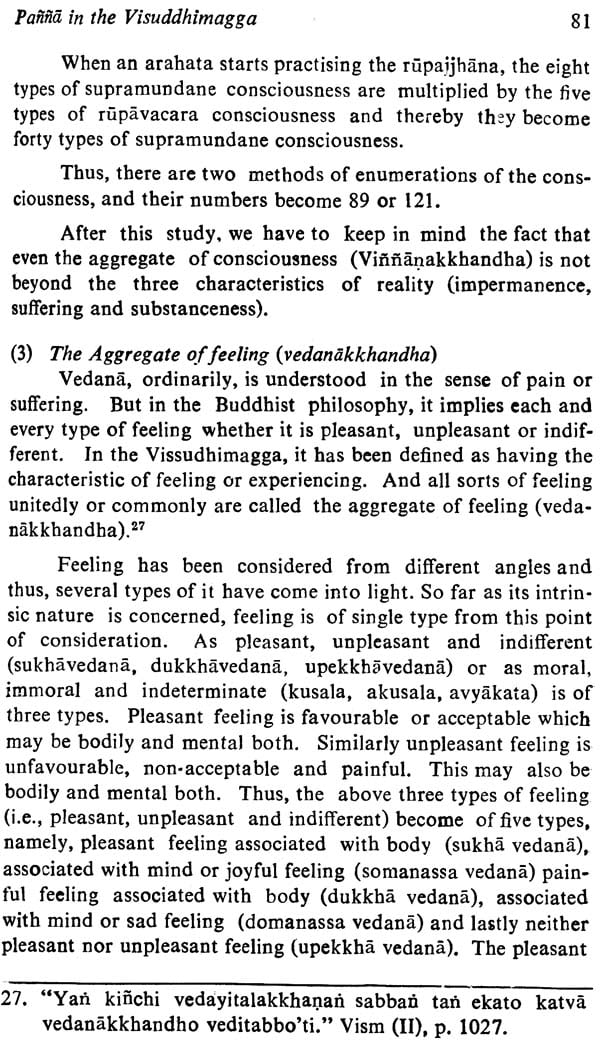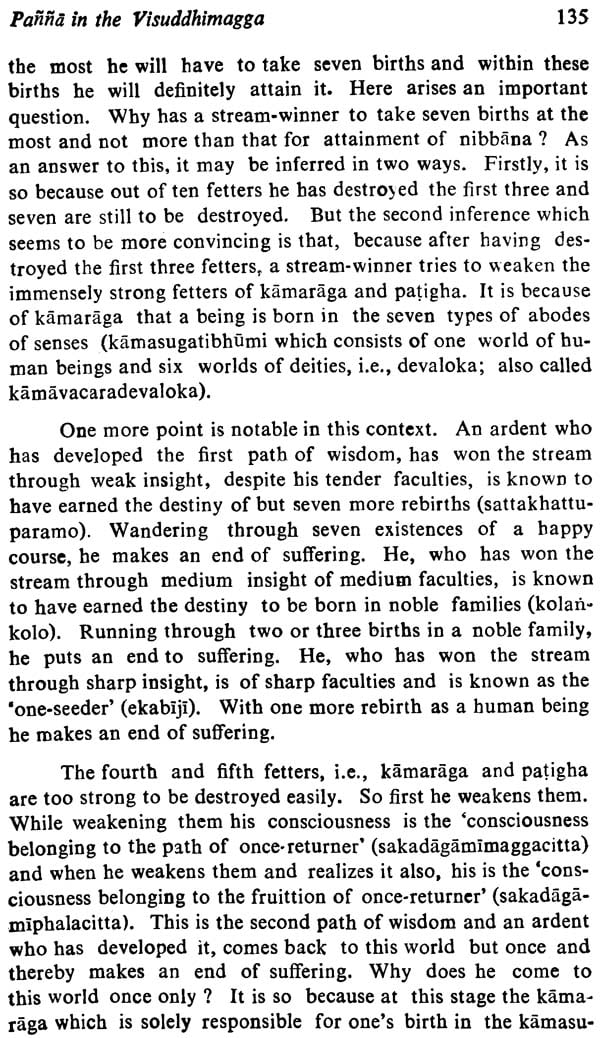
Panna in Early Buddhism - With Special Reference to Visuddhimagga) (An Old and Rare Book)
Book Specification
| Item Code: | NAQ361 |
| Author: | Dr. Baidyanath Labh |
| Publisher: | Eastern Book Linkers |
| Language: | English |
| Edition: | 1991 |
| Pages: | 175 |
| Cover: | HARDCOVER |
| Other Details | 8.50 X 5.50 inch |
| Weight | 300 gm |
Book Description
The Buddha prescribed a path of gradual purification. It has three steps, namely; Sila Samadhi and Panna. Sila helps in curtailing the physical and vocal misdeeds. Samadhi minimizes the pollutions of mind. Panna removes the darkness of ignorance and unfolds the nature of reality. The man having such soothing light of wisdom, finally destroys the chains of attachment and achieves a state of desirelessness. It is named as Nibbana.
It is a complete path of Freedom. The man, rightly set in on it starts his career as a Puthujjana and through his gradual efforts becomes an Arahata. It is the consummation of the path in taking a man from a state of suffering to the state of eternal Bliss.
Each step here helps the other in preparing a psychic base for further development. They have a sound psychological role to play in generation of purification of mind. But Panna has a more vital role in this framework. It removes the darkness of ignorance, generates the light of wisdom and inspires the man for realization of the threefold nature of reality for total elimination of attachment.
It is a fact that much has been written on Sila. Leaning towards Samadhi has become a Socio-academic craze. A number of books, based on the Scriptural texts, have come during the last twenty years. At the same time no much has been written on Panna. It is, perhaps, due to its very subtle nature. It is a matter of great satisfaction that Dr. Baidya Nath Labh has taken up this dificult topic and going deep into the original sources, presented a meaningful descriptive account of Panna for which he
Panna (wisdom) has a unique place in the Buddhist thought and tradition. It denotes the sense of proper or right understanding, insight, the highest knowledge etc. and by attaining it, -one becomes able to visualise and to understand everything in its true perspective, and thereby gives up unnecessary craving-and-attainment for it. Thus, Panna is not merely a theoretical knowledge but practically a way out to get rid of all sorts of misery in life.
According to the Buddhist philosophy, basic problem of life is dukkha (suffering) which has its cause and condition in craving-and-attachment and this craving-and attachment is, in turn, the product of avijja (ignorance). So, if the root cause is -destroyed somehow, the problem of dukkha (suffering) is also -solved, and here starts the role of panna.
The Buddha has prescribed the medicine of "panna" to cure the ailmentof "dukkha", but it is also a fact that this medicine is very difficult to be acquired. The pragmatic Buddha, "therefore, always emphasised and promoted the practical way of solution and preferred it to mere scholastic discussions.
In this light, we find a very systematic and effective way leading towards attainment of wisdom. This is a threefold way having sila (virtue), samadhi (concentration) and panna -(wisdom) as its steps.
As this way is a practical one and its fruits attainable by -observance and practice only, a person desirous of getting rid of -suffering must observe and follow the way sincerely and devotedly. First of all, there is the necessity of controlling one’s physical and vocal activities by restraining the respective misdeeds and promoting their moral counterparts. The first step-‘virtue’ has been prescribed for this purpose. When physical and vocal actions are restrained and purified, next comes the turn of "concentration". Concentration is the one-pointednesss of moral consciousness (kusalacitta). It concentrates mind on some particular object after curtailing various types of ' defilements of the latter. When the practitioner gets purified in the three ways-physically, vocally and mentally, he enters the- domain of wisdom (Panna) and after constant practice and-. developments, attains the same ultimately. On getting wisdom, he clearly understands the threefold characteristics of reality,_ namely impermanence, suffering and substance less. By visualising so, one succeeds in curtailing all sorts of craving-and-attachment and ultimately attains the Eternal Bliss, i.e. Nibbana.
The concept of wisdom had been fascinating me since long. making me curious to know what the Buddha prescribed in wisdom for cure of the ailment of suffering from life of beings. It resulted in my Ph. D. research on this subject and this book is a thoroughly revised and expanded version of my Ph.D. thesis.
Wisdom, with various aspects, has exhaustively been explained and analysed in the Buddhist scriptures written in different languages. However, in the present work, attempts. have been made to confine and focus the concept in early Buddhism specifically in the Pali literature with special reference to the Visuddhimagga.
This is not the first attempt on the subject. Many eminent. scholars of Buddhism have been discussing the subject at length. time to time, however, not altogether unimpeded from certain. limitations. The present authour has, but, tried to study the subject from the traditional view point with a tinge of modern. opproach. This is not only for intellectual analysis, but also for spiritual well-being of human beings. Our approach is, there- fore, to examine the way prescribed by the Buddha, serving as. a guiding factor to emancipate man from suffering and thus be- helpful to discover the state of eternal bliss, i.e. Nibbana. Thus, 1his is my humble effort to understand and analyse wisdom its various aspects and I hope this will serve as a guideline to students and researchers in this fields.
**Contents and Sample Pages**
